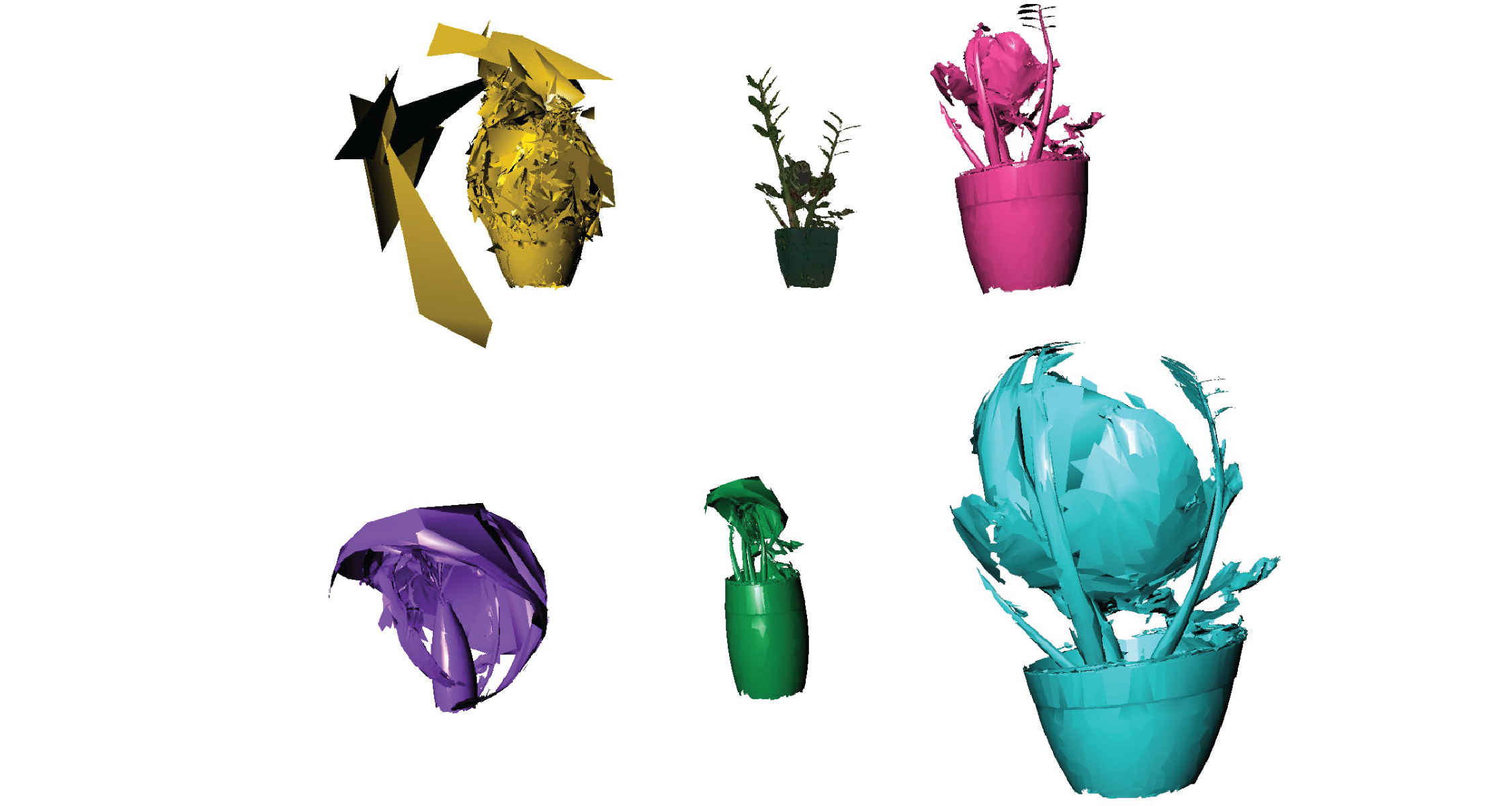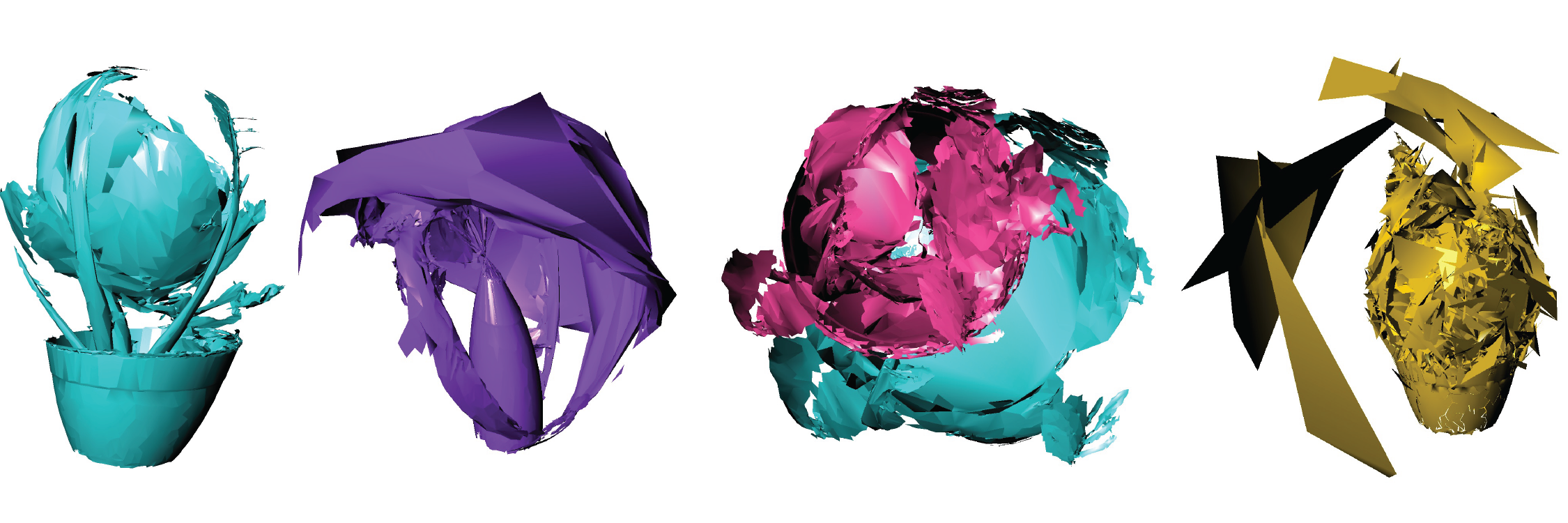Big Bang Plant
If Kafka Were a Gardener

Big Bang Plant draws inspiration from the forms of metamorphosis invoked by its two namesakes: the original blooming of life (the “class scope,” as it were) that frames all subsequent bloomings of life (the “block scope”), and one particular instantiation in the form of a plant growing on the desk of Marina’s tray buddy. As we manipulated the mesh representation of the plant, other forms of metamorphosis emerged to interpret of the initial inspirations. The plant meshes swelled out into the uncanny ovular shape of a cockroach. Not just Kafka-esque, but Kafka’s story itself.
Our experience of Kafka’s metamorphosis is best characterized by two other artists’ renditions of it. Nabokov puts it this way: “Contrast and uniformity, style and the depicted, portrayal and fable are seamlessly intertwined.” And Andy Warhol visualizes this contrast/uniformity with his portrait of the author. We were excited to find the same duality in the ways that the vector graphics (the red on the top right) traced out the object as negative space, and the warped meshes did the opposite: reform the meshes’ positive space.



